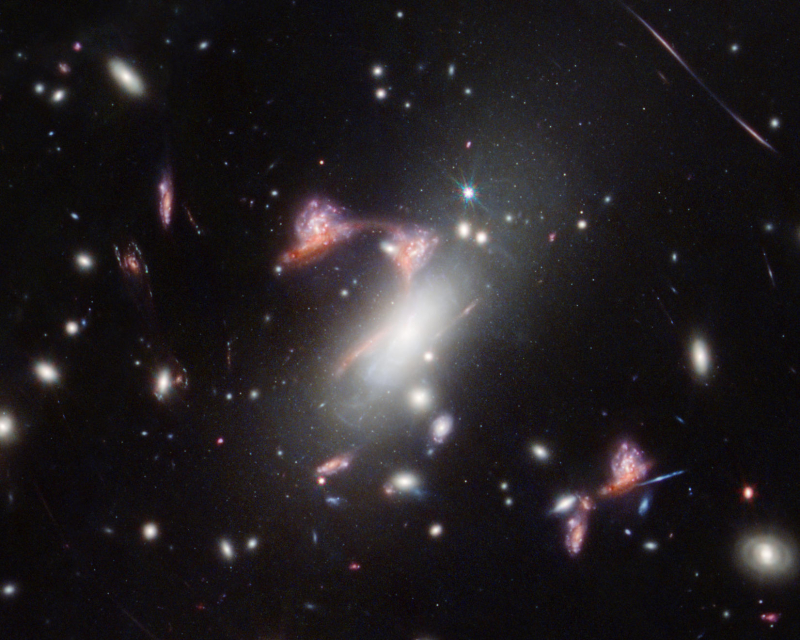Last year, the James Webb Space Telescope (JWST) accidentally discovered a question mark-shaped object in the sky. It was captured at the bottom of the image of a pair of forming stars in the constellation Velae, located about 1,470 light-years from Earth. An international group of scientists claims that they have managed to understand the nature of the mysterious object.

The merger of two galaxies in the James Webb image. Image source: nasa.gov
Based on the red color of the object, astronomers already knew that it was quite distant. The working hypothesis was that it was a pair of galaxies that were approaching each other along a spiral trajectory. This was confirmed by the latest image of this part of the sky. The question mark is formed by two interacting galaxies: the red dusty one marks the curve of the question mark, and the white spiral one is pressed against the looping arc to its right. The point is formed by a third galaxy, which has no relation to the first two – it simply turned out to be in the right place from the position of “James Webb”.
According to the telescope, the two galaxies are 7 billion light-years from Earth and close enough to interact with each other. Perhaps star formation regions emerged as their gas reservoirs collided. Neither of them has a strong distortion of the normal shape, “so we are likely seeing the beginning of their interaction with each other,” the scientists say. Images of objects are distorted and duplicated by a cluster of galaxies in the foreground – it is so massive that a warp of space and time occurs, which is called gravitational lensing. As a result, the red galaxy from the pair was captured five times in the image.

The merger of two galaxies in the Hubble telescope version
«”Multi-mirror” gravitational lensing, the effect of which is observed in the new James Webb image, is rare – it requires special positions of the observer, distant galaxies and the lensing object. In this case, the latter is played by the galaxy cluster MACS-J0417.5-1154; and the type of effect it produces is called a “hyperbolic umbilical gravitational lens.” So far, scientists have not observed many such phenomena.
By studying the star-forming regions in the latest image, astronomers can draw conclusions about the development of galaxies throughout the history of the Universe. It also sheds light on the past of our Milky Way: the masses of the two galaxies in the image are similar to ours billions of years ago – with this image, “James Webb” gives us a glimpse into its teenage years, researchers say.